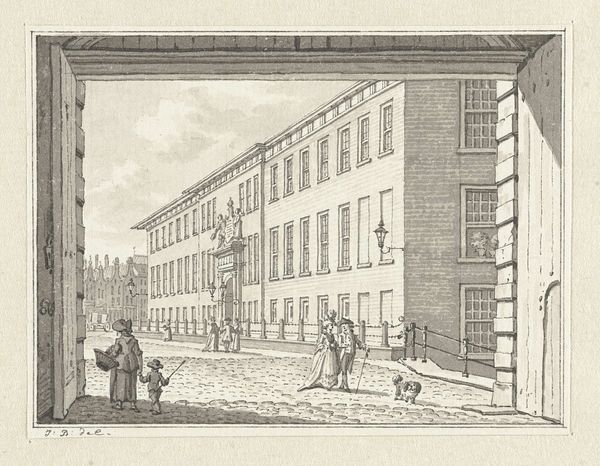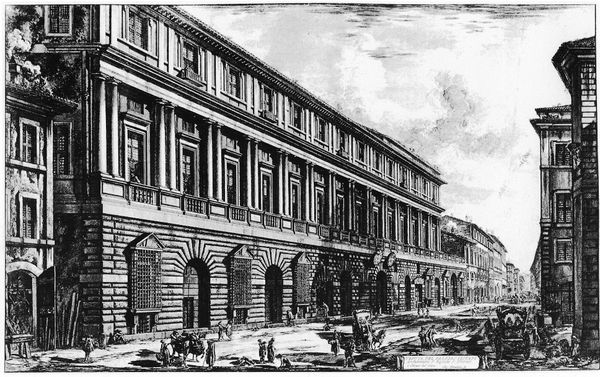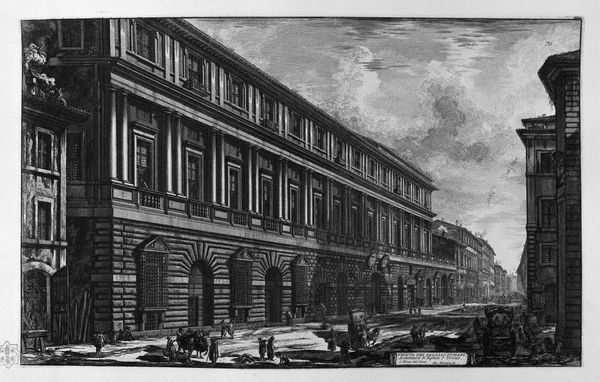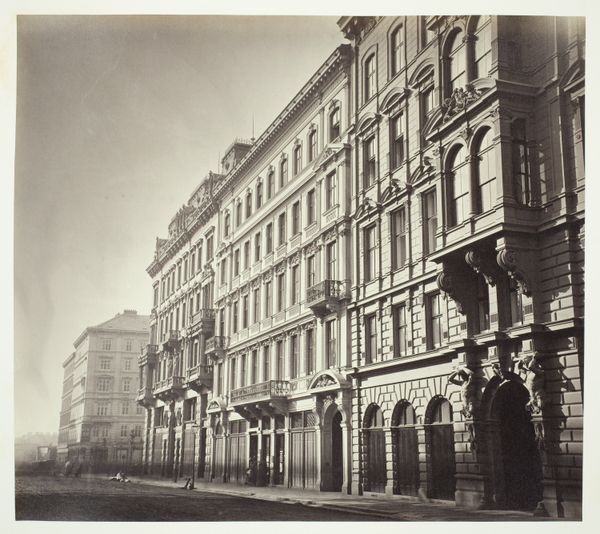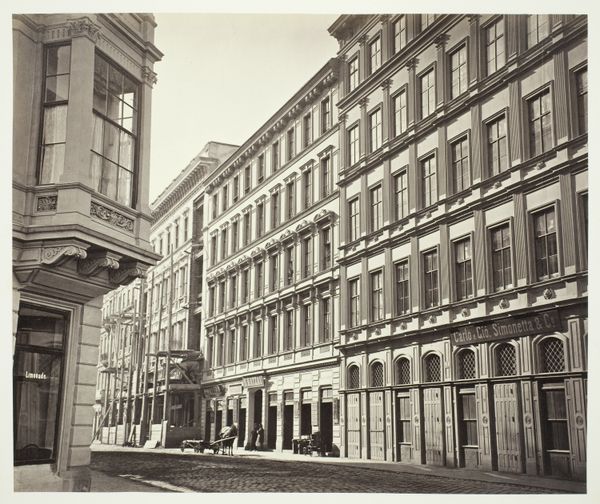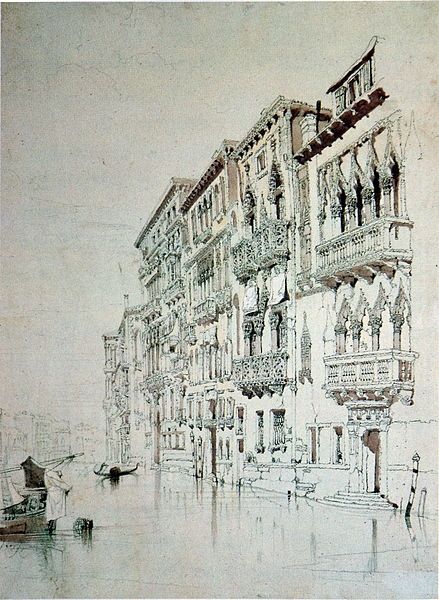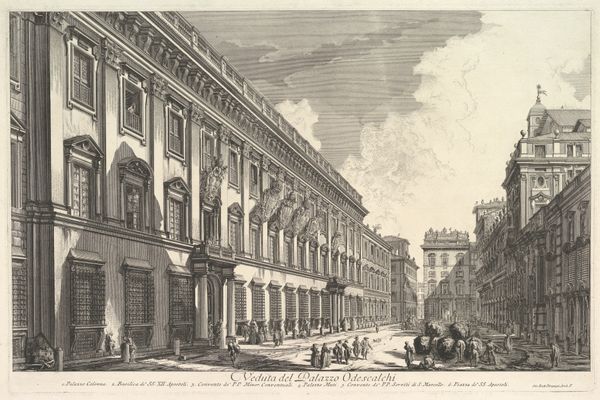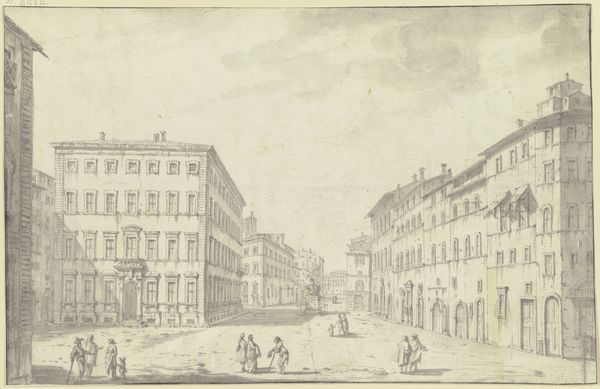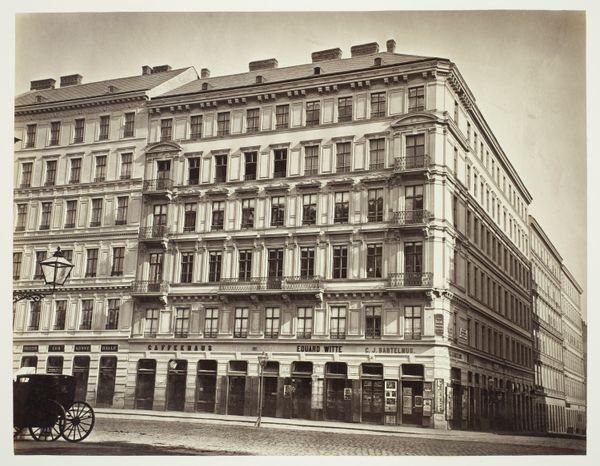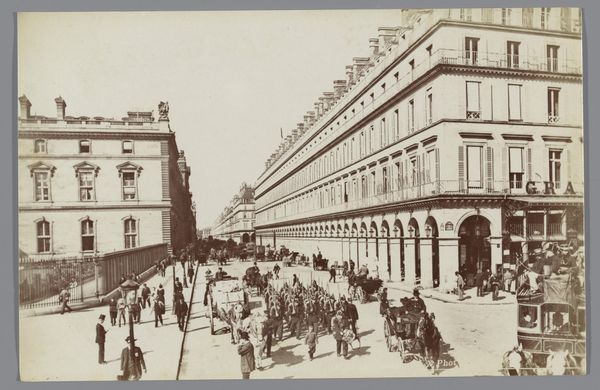
drawing, pen
#
architectural sketch
#
drawing
#
pencil sketch
#
perspective
#
architecture drawing
#
pen
#
cityscape
#
academic-art
Copyright: Public domain
Curator: Giuseppe Barberis’ pen and pencil drawing, "Piazza Martiri," made in 1895, offers a glimpse into an Italian cityscape. It’s all done with incredibly fine hatching to create tone. What are your initial thoughts? Editor: Well, my first impression is of quiet, almost unsettling stillness. The architecture feels imposing and orderly, but the emptiness, particularly in the center of the piazza, gives me a feeling of anticipation, of something about to happen. The buildings look almost like stage sets. Curator: I notice you say 'stage sets.' To me, this stillness embodies a moment of collective memory, especially when you note the monument dominating the foreground. Editor: What kind of memory? Curator: Well, consider its central positioning and elaborate decorations; this isn’t just a depiction of a square but an encapsulation of cultural identity. It evokes ideals tied to historical struggles for freedom or independence, perhaps serving as a location for communal contemplation of values through symbols. Editor: I suppose from my perspective that the monument could be seen simply as a focal point within Barberis’ rigorously structured composition. I am more concerned about its formal qualities like how the verticality contrasts with the horizontal sweep of the buildings lining the streets. The use of light and shadow here creates depth and emphasizes that perspectival correctness too. It gives me an appreciation of the rational organization characteristic in this kind of academic art. Curator: But you cannot deny its emotive intent: in contrast to its stoicism is the implied trauma of that history rendered on the monument. In its function as memorial it is more than sculptural object. This serves a potent reminder against forgetting; the intent is to inform collective identity with civic pride and to reflect on loss. The cityscape becomes a theatre for societal remembering, in turn fostering patriotism. Editor: While I concede your reading accounts for emotional considerations linked to context, I’m drawn to appreciating how that historical understanding may be interpreted or transmitted visually via a semiotic system comprised within art’s composition such that our response itself to history comes through form—that emotion too lies captured compositionally. It might mean different sentiments given temporal distance yet artistic qualities stay fixed enabling appreciation outside what memories activate then inside. Curator: That intersection between artistic method and symbolic load then adds new richness, beyond our emotional triggers – enabling dialogue. Editor: Indeed - appreciating both approaches seems essential here – illuminating artwork beyond mere stylistic concerns but grounded upon broader social or conceptual scopes alike which brings deeper levels from historical memory plus formalized aspects blended harmoniously too indeed allowing continuous reflections from form & symbolism overall across timelines thus creating enhanced artistic value over fleeting associations through narrative-only either separately when these get interlaced.
Comments
No comments
Be the first to comment and join the conversation on the ultimate creative platform.

